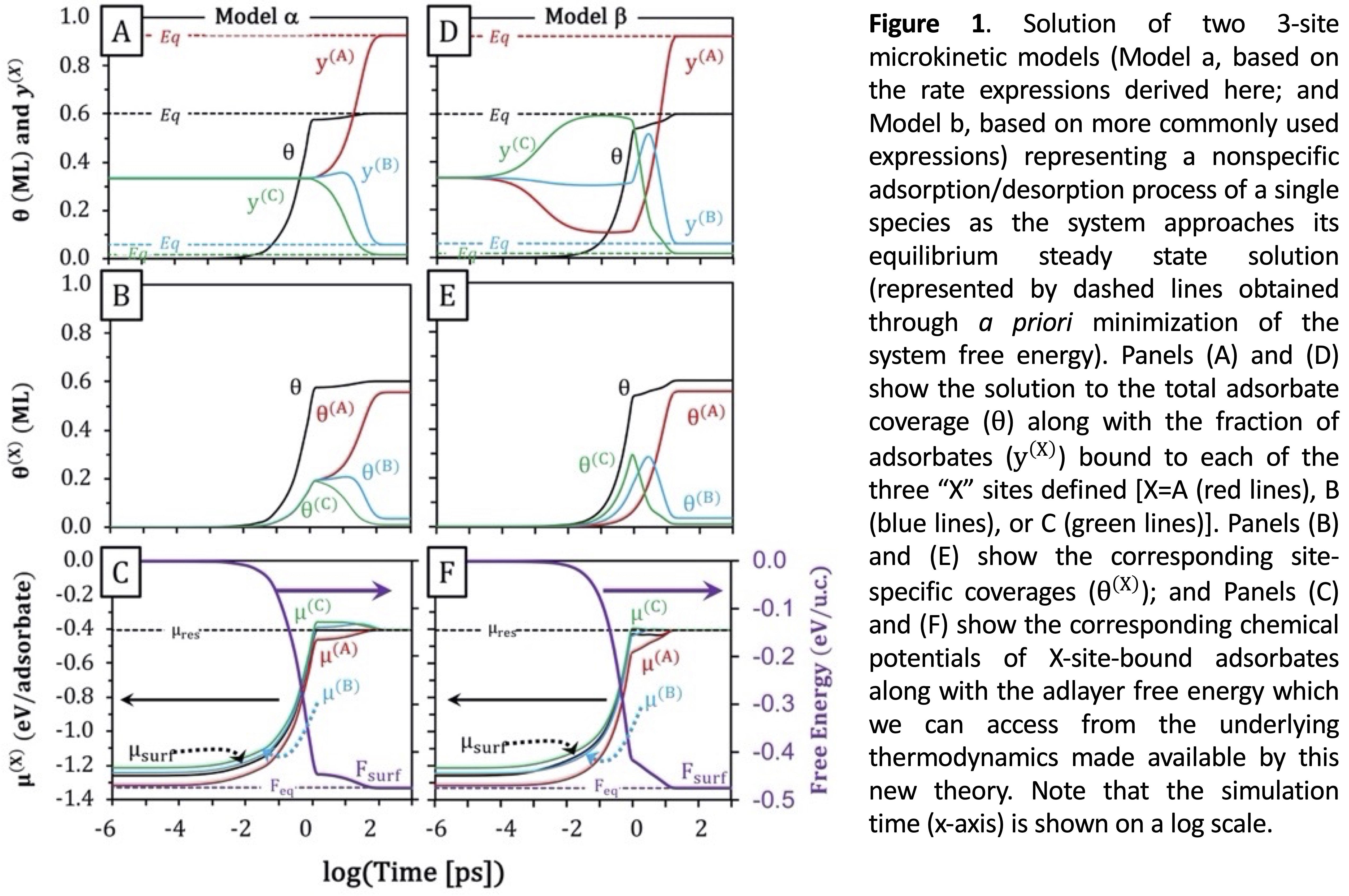(179d) Rate Expressions in Mean Field Microkinetic Models Incorporating Multiple Types of Active Sites
AIChE Annual Meeting
2022
2022 Annual Meeting
Catalysis and Reaction Engineering Division
Fundamentals of Catalysis and Surface Science III: Kinetics of surface reactions
Monday, November 14, 2022 - 4:30pm to 4:50pm
Heterogenous catalysts exhibit a distribution of sites/structures, some more active than others but more than one often important to the underlying reaction mechanism(s). The inclusion of this reality in mean field microkinetic models (MKMs) has been largely avoided in favor of lattice-based models where in principle different types of sites can be explicitly defined. Here, we develop a thermodynamically self-consistent theory of multi-site microkinetics from the first principles of statistical mechanics to show how multiple site types can be represented in mean field microkinetic models. The theory incorporates local enthalpies and entropies, lateral molecular interactions, and global entropy; generating thermodynamic activities for any number of site types that deviate significantly from those of idealized models. We provide the resultant rate expressions for rates of adsorption/desorption and surface diffusion between the site types. Contrary to what is typically assumed, even when a species has access to many different sites or binding configurations, only one rate, which is driven by the average adlayer chemical potential, can be defined for desorption from the surface. Figure 1 shows two solutions of a 3-site MKM, one (Model α) using the rate expression developed here for such a system, and the other (Model β) using the typical expressions and assumptions (but contrived to nonetheless be thermodynamically self-consistent). One example of the aphysicality of Model β is seen by comparing panel D to panel F: as the molecule adsorbs, the site with the highest chemical potential, site-C (μ(C), green line in panel F) is preferentially occupied (y(C), green line in panel D) over the sites with lower chemical potentials. Our rate expressions give much more physical results. This talk will go over the basic principles and theory used to derive these rate expressions and arrive at our conclusions with demonstrations of their applicability.


